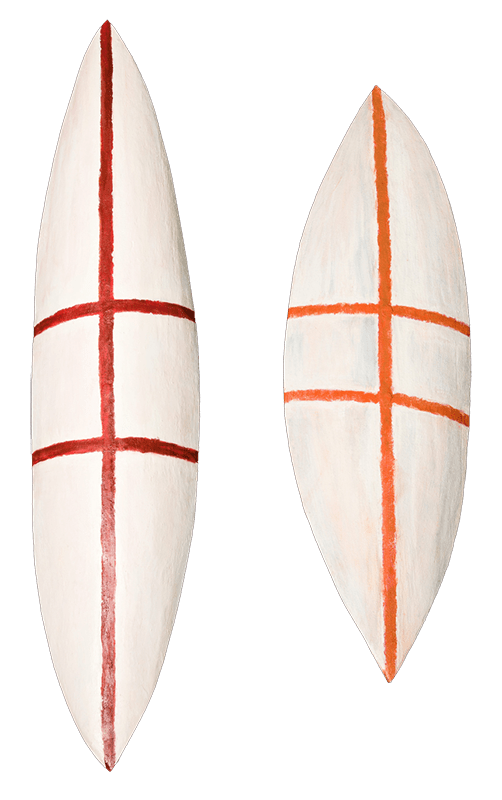Object and species identification
The Australian Museum's areas of study include Australasian animal life and geology as well as First Nations cultural objects from Australia and the Pacific. Ask our experts a question online!

Do you have a question about an animal, mineral or object? Found a creature at home that you can't identify? Not sure what bird you photographed?
We can help.
First, please review our common enquires below to see whether we have answered your question or identified your specimen or object in the past.
If you cannot find what you are looking for on our website, please contact us using the enquiry form on this page. If your enquiry falls outside of the Australian Museum's fields of expertise, we can put you in contact with the most relevant institution or authority.
Have we already answered your question?
Find out what people have been asking our experts at the Australian Museum and access quick guides to identifying different species.
Check our common enquiriesAsk an Expert enquiry form
Still haven't found what you're looking for?
Click the 'Ask an Expert' button below to fill in our form and submit an enquiry to our team of experts. If you are uploading an image, you can also read our tips on how to take a good photo for scientific identification.
Please note that enquiries may take between three to six weeks for a response depending on the complexity of your request and the number of enquiries our Ask an Expert team are working on. Thank you for your patience.
Is it something outside our areas of expertise?
The Australian Museum Ask an Expert team focus on Australian species and First Nations cultural object information requests. Please review the links below for other expert advice:
- For plant identifications and enquiries, please contact the Royal Botanic Garden.
- Any enquiries about spider or insect bites, stings or discomfort on humans and pets come under the field of Medical Entomology. The AM does not have expertise with this area of study.
- For culture, design and technology enquiries, please contact the Museum of Applied Arts and Sciences.
- For colonial history enquiries, please contact Sydney Living Museums.
- For ancient cultures enquiries, please contact the Chau Chak Wing Museum or the Museum of Ancient Cultures.
- For coins or currency enquiries, please contact the Australian Centre for Ancient Numismatic Studies or the Royal Australian Mint.
- For arts enquiries, please contact the Art Gallery of NSW.
- We do not perform valuations on any objects or specimens.
How to take a good specimen photo
Photos should capture as much detail as possible so we can provide an identification. The more information we have on the item, the better our identification can be!
- Make sure the animal is in focus.
- Tell us where the animal was found.
- Try and get something (a ruler, pen, coin etc.) in for scale.
- The more photos, the better! Try taking from different angles also, capturing legs, head shape, spines, body, etc.
- Please do not touch or disturb the animals in their habitat as there is a risk of getting bitten. Take the best photos you can without touching, moving or harming the animals.
If you are sending an insect or spider for identification, it will need to be frozen. This is the most humane way to kill them and preserves a lot of their features.
Please note that the Australian Museum does not examine specimens that have been found on/in human skin or hair nor are we able to provide pest control advice. Medical entomology is a different field; please click here for more information.
Any enquiries sent in relating to Medical Entomology will not be answered.
Small insects that cannot be photographed can be swept into a jar, using a paintbrush. Please do not use sticky tape.
Once you capture it in a jar, leave it in the freezer for at least a day before placing the specimen into methylated spirits for a few days.
In a sturdy, sealable container, place some cotton wool at the bottom then place the specimen on top, covered by some more cotton wool. Seal the container shut before placing into a padded postal bag. Make sure you include a letter that has your name, contact details, where and when you collected the specimen.
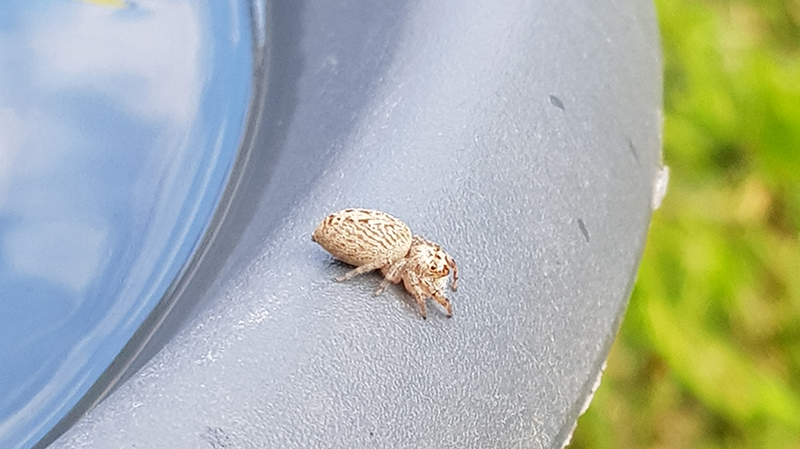
These are good photos! These photos are from different angles so we can see the overall shape of the spider and make out more features.
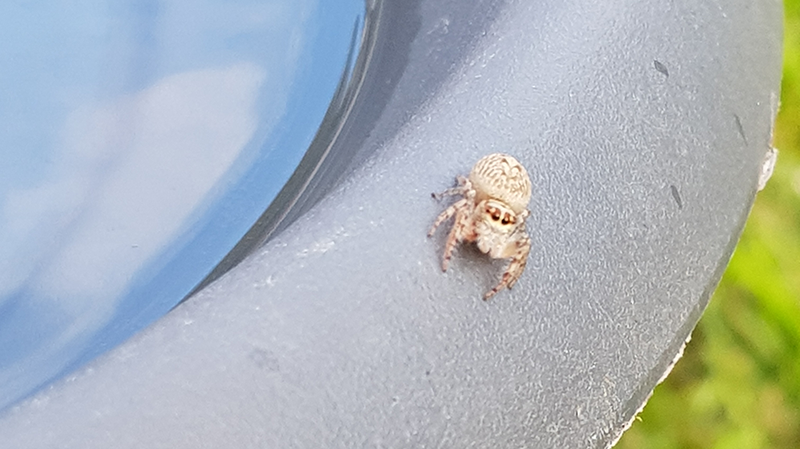
Take as many photos as you can from different angles and send us the best photos for identification. Try and place something in for scale.
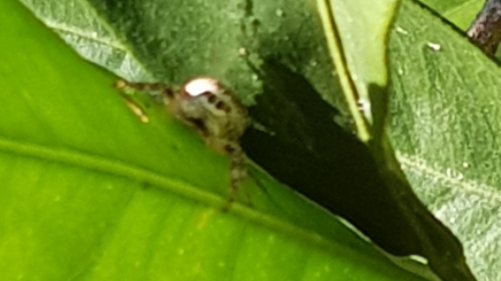
This is a bad photo! A single angle image that is taken front on doesn't give us much information for identification. It is also out of focus.
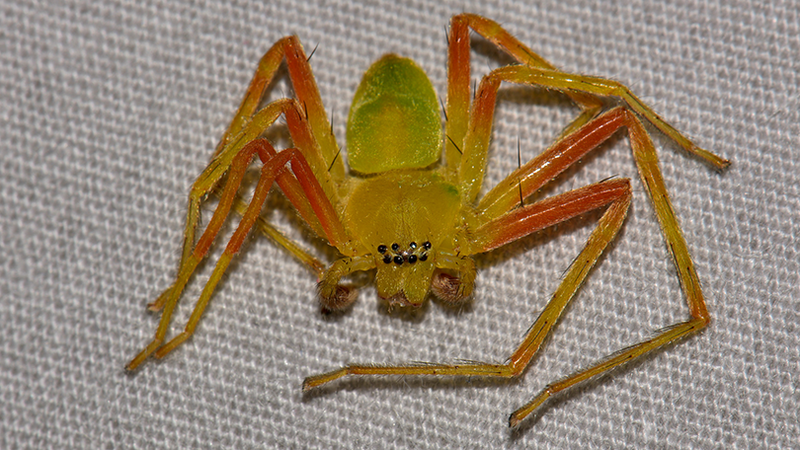
These are good photos too. These photos are from different angles so we can see the top and bottom of the spider and make out more features.
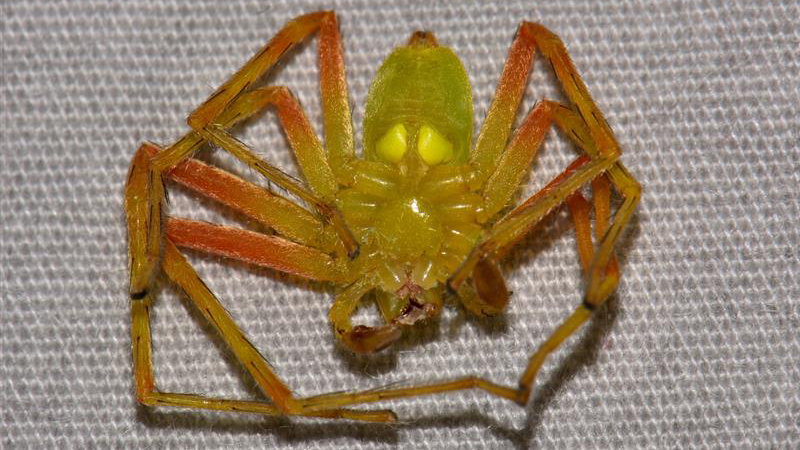
We do not recommend trying to get this close to live spiders for photos!
- Make sure the specimen is in focus and well lit.
- Take multiple photos from different angles.
- Tell us where the specimen was found e.g. on a beach, buried, etc.
- Tell us any interesting characteristics, such as:
- mass (in grams, if possible);
- size (in millimetres, if possible);
- whether it is magnetic; and
- for minerals, whether it can be scratched.
- Place something next to the specimen for scale.
- For geological specimens, please include a close-up or magnified view of a more interesting part of the specimen to show crystal structure.
If you are sending a geological specimen, wrap up the item and place it into a padded postal bag, remembering to include a letter that has your name, contact details, where and when you collected the specimen.
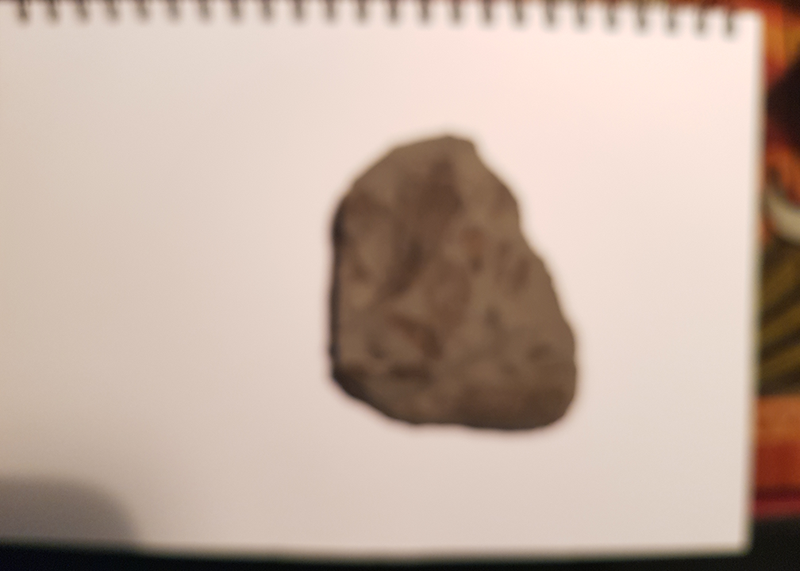
This image is not in focus and we don't have something in for scale. This is not a useful image for identification.
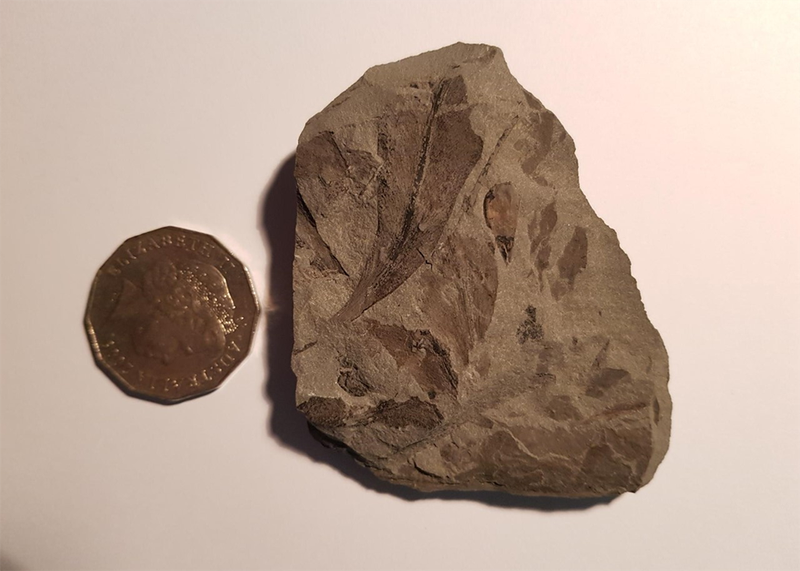
This image is in focus and we have a 50c coin in for scale. Providing us with more photos of this fossil would help us make better identifications.
- Make sure the animal is in focus.
- Send us the highest resolution images.
- Try and take photos from multiple angles to see the different features of the animal (head, ears, feet, tail, etc).
- Tell us the location of where the animal was found.
- Including a scale, such as a ruler or tape measure, in the photo will help us get an idea of size.
- Please do not touch or disturb the animals in their habitat. Take the best photos you can without touching, moving or harming the animals.
- Please note when identifying frogs: There is a risk of transmitting diseases, so please do not handle them.
- If you see a frog that looks unusual or isn't moving, find out what you can do to help here.
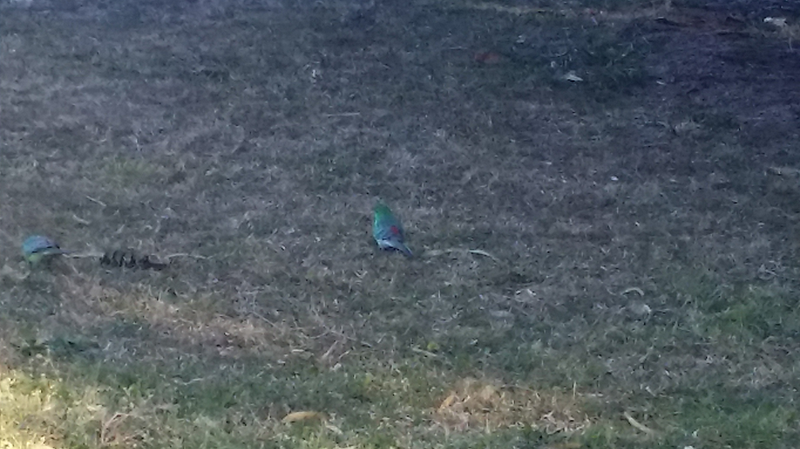
There is not enough detail captured to identify these birds. The birds are too far away and the only details captured is the green colour.
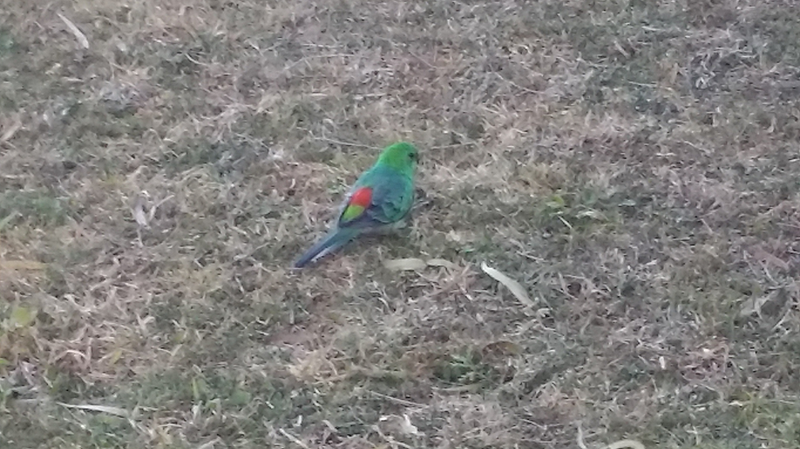
This photo is better because the colours on the wings are captured, helping us with identification. A scale would also help with identification. When the animal leaves, see if you can place something on the ground to help us with scale. Vertebrates can be difficult to photograph; take as many photos as you can and send us the best ones. Capturing distinct features help with identification.
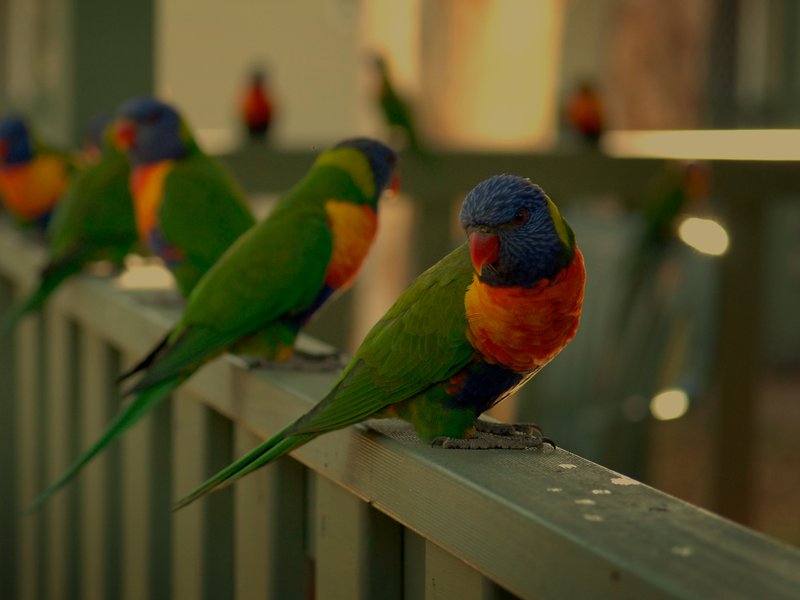
This is a very good bird photo for identification. The bird is in frame, in focus and was close to the camera. The fence also gives us a sense of scale.
- Make sure the animal is in focus.
- Send us the highest resolution images.
- Place something in for a scale (ruler, coin, etc.).
- Try and take from multiple angles to see different features.
- Tell us the location of where the animal was found.
- If it was performing an unusual behaviour, try and describe it to us.
Please note that getting a species level identification of these animals is quite difficult, regardless of image quality.
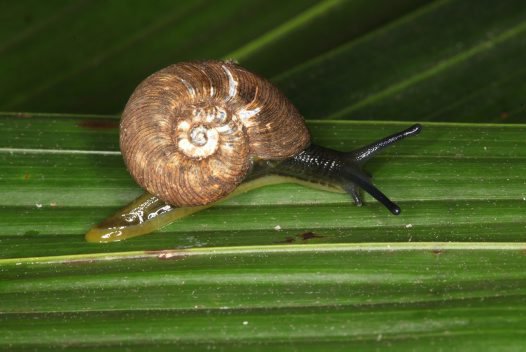
This is a good photo of a snail. The lighting is clear and the animal is in focus. Putting a ruler or everyday item next to the animal (or waiting until its gone and putting something onto where it was) helps with a sense of scale.
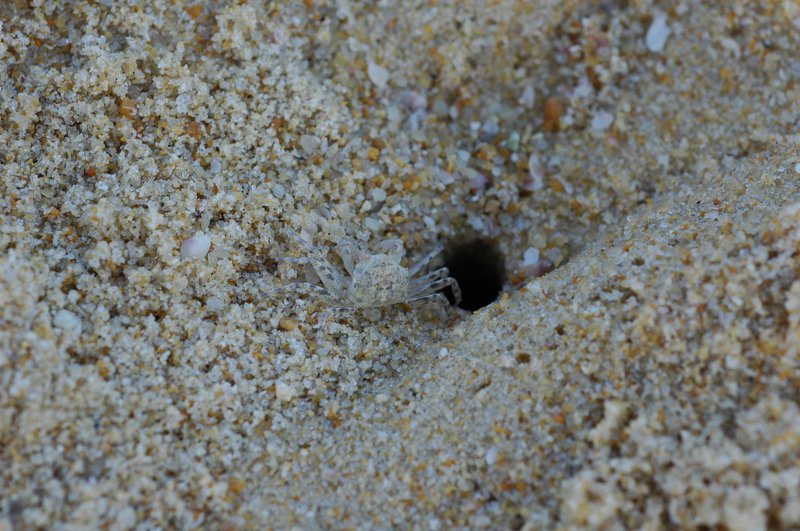
This crab camouflages very well with its environment. This can make identification difficult! Multiple photos from different angles would help with identification.
First Nations and Pasifika objects
The Australian Museum greatly appreciates requests to donate items to our cultural collections; however, new acquisitions are subject to a rigorous process of analysis to ensure they represent the best possible fit with our existing collections and priorities.
Please submit your enquiry to the Ask an Expert team via the online form for consideration.
Please do not send archaeological objects or cultural material through the mail.
Archaeological finds
If the item is found in situ (in the ground) please leave it and contact the Aboriginal Cultural Heritage Department, The Office of Environment and Heritage.
To report harm to Aboriginal items or sites call the Environment Line on 131 555.
If the item was found in a National Park, it would be best to inform them of the find.
To check which NSW Local Aboriginal Land Council is best to contact for advice please go to: https://alc.org.au/land_council
Cultural objects
Detailed information about the provenance of objects greatly assists us in assessing a request to identify or consider donations of First Nations cultural material, so to determine what the items are or advise on what to do next. Please refer to our Cultural collections donation webpage for more information.
Follow these tips to take a good photo for inclusion with your request:
- Make sure the objects are in focus.
- Include something for scale.
- Take multiple images, turning the item over so we can see the entire object.
- If the item has carved details, take photos of them.
- Include the exact location of where the items were collected from.
Learn out more about the repatriation of cultural material here.

